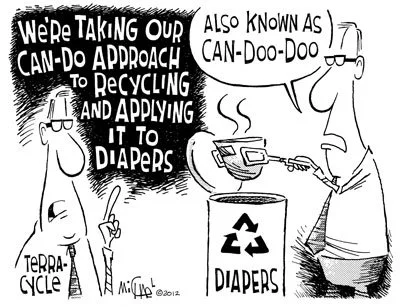https://www.wasterecyclingnews.com/landfill/landfill-report.html?id=1306942437
Biodegradable products, such as disposable cups and utensils, may be doing more harm than good in landfills, according to researchers from North Carolina State University.
The study, which was published online in Environmental Science & Technology, found that so-called eco-friendly products release a powerful greenhouse gas as they break down.
The problem is attributable to the rate at which biodegradable materials break down, the study found. According to Federal Trade Commission guidelines, products marked as biodegradable should decompose within “a reasonably short period of time” after disposal.
But that rapid deterioration may be environmentally harmful, the researchers found.
Federal regulations do not require landfills that collect methane to install gas collection systems for at least two years after the waste is buried. If materials break down and release methane too quickly, the study said, much of the methane will likely be emitted before the collection technology is installed. This means less potential fuel for energy use and more greenhouse gas emissions.
The researchers found that a slower rate of biodegradation is more environmentally friendly because the majority of the methane production will occur after the methane collection system is in place.
“Methane can be a valuable energy source when captured, but is a potent greenhouse gas when released into the atmosphere,” said Morton Barlaz, co-author of the study and a professor and head of N.C. State’s Department of Civil, Construction and Environmental Engineering, in a statement. “In other words, biodegradable products are not necessarily more environmentally friendly when disposed of in landfills.”
 Jan. 24 — One of the dirtiest and most demonized portions of the municipal waste stream may soon be diverted from its centuries-long decomposition site: landfills.Developing a recycling solution for used disposable diapers, a biological amalgam of complexity, has been a top priority of the global research and development team at TerraCycle Inc., a Trenton, N.J.-based company whose mission is to create innovative solutions for any waste stream headed to the landfill.
Jan. 24 — One of the dirtiest and most demonized portions of the municipal waste stream may soon be diverted from its centuries-long decomposition site: landfills.Developing a recycling solution for used disposable diapers, a biological amalgam of complexity, has been a top priority of the global research and development team at TerraCycle Inc., a Trenton, N.J.-based company whose mission is to create innovative solutions for any waste stream headed to the landfill.

